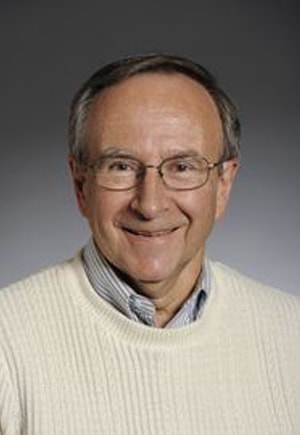James S. Russ
Emeritus Professor of Physics
Nuclear & Particle Physics
High Energy Physics Experiment
Wean Hall 7402

Education & Professional Experience
Professor of Physics, Carnegie Mellon University, 1974–
Associate Professor, Carnegie Mellon University, 1970–74
Assistant Professor, Carnegie Mellon University, 1967–70
Instructor, Princeton University, 1966–67
Research Interests
My research has two thrusts – accelerator-based experiments involving particles containing heavy quarks, and an astro-particle experiment aimed at uncovering possible point sources for ultra-high-energy neutrinos. The accelerator program is based at CDF at Fermilab and CMS at CERN. It explores the nature of the strong force, via the production properties of heavy-quark states compared to the more copious light-quark states, as well as looking for evidence of new physics by precision measurements of weak decays of hadrons containing b-mesons. Work at CDF over the last decade has highlighted some unanticipated features of data, and our group is planning to continue these studies in CMS. Of course the opening of a new energy frontier at the Large Hadron Collider is an exciting time for particle physics. Our program includes active participation in searches for new phenomena, such as supersymmetry, with the expectation that we will find evidence not only for a new class of particles but also discover the source of the mysterious dark matter that permeates the universe.
The cosmological aspects of the supersymmetry searches are related to our new astro-particle experiment to probe energy release in Active Galactic Nuclei and other cosmic accelerators. High Energy Neutrino astronomy is a major new tool in our generation. We are developing a new experimental technique that complements the big experiments now underway at the South Pole and in the Mediterranean. We can tell the difference between individual point sources and a diffuse flux from a large region in space – a unique feature of our approach, and a crucial step forward for the field.
Selected Publications
V. Khachatryan et al., Measurement of J/ψ and ψ(2S) Prompt Double-Differential Cross Sections in p-p Collisions at √s̅ = 7 TeV, Physical Review Letters 114, 191802 (2015)
V. Khachatryan et al., (CMS Collaboration) Measurements of the Υ(1S), Υ(2S), and Υ(3S) differential cross sections in pp collisions at √s=7 TeV, Phys.Lett. B749, 14 (2015)
V. Khachatryan et al., Measurement of Prompt ψ(2S) to J/ψ Yield Ratios in Pb-Pb and p-p Collisions at √sNN = 2.76 TeV, Physical Review Letters 113, 262301 (2014)
T. Aaltonen et al., Mass and lifetime measurements of bottom and charm baryons in pp̅ collisions at √s = 1.96 TeV, Phys. Rev. D 89, 72014 (2014)
Eric Braaten, James Russ, J/ψ and Ψ Polarization in Hadronic Production Processes , Annual Review of Nuclear and Particle Science 64, 221 (2014)
CMS Collaboration, Measurement of the prompt J ψ and Υ(2S) polarizations in p-p collisions at √s = 7 TeV, Phys. Lett. B 727, 381 (2013)
S. Chatrchyan et al., (CMS Collaboration) Measurement of the Υ(1S), Υ(2S), and Υ(3S) polarizations in pp collisions at √ s = 7 TeV, Phys Rev Lett 110, 81802 (2013)
S. Chatrchyan et al., Observation of a new boson at a mass of 125 GeV with the CMS experiment at the LHC, Physics Letters B 716, 30 (2012)
T. Aaltonen et al., Measurements of the Angular Distributions of Muons from Υ Decays in pp̅ Collisions at √s̅=1.96 TeV, Physical Review Letters 108, 151802 (2012)
T. Aaltonen et al., Observation of the Ξb0 Baryon, Physical Review Letters 107, 102001 (2011)
T. Aaltonen et al., Production of ψ(2S) mesons in pp̅ collisions at 1.96 TeV, Physical Review D 80, 031103 (2009)
M. Mattson et al., First Observation of the Doubly Charmed Baryon Ξcc+, Physical Review Letters 89, 112001 (2002)